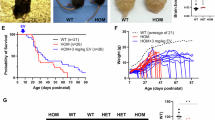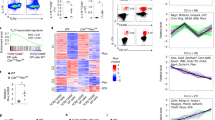Abstract
Background:
Phosphatase and tensin homolog (PTEN) hamartoma tumor syndrome (PHTS) is caused by germ line mutations in the PTEN gene. Symptoms include cancer predisposition, immune deviations, and lipomas/lipomatosis. No causal standard therapy is available. We describe a therapeutic attempt with the mammalian target of rapamycin (mTOR) inhibitor sirolimus for a PHTS patient suffering from thymus hyperplasia and lipomatosis. We furthermore assessed the in vitro effects of sirolimus and other inhibitors on lipoma cells of the patient.
Methods:
The patient underwent clinical and blood examinations and whole-body magnetic resonance imaging to assess tumor sizes. Lipoma cells of the patient were incubated with inhibitors of the phosphoinositide-3-kinase (PI3K)/AKT/mTOR signaling pathway to analyze the effects on proliferation, adipocyte differentiation, and survival in vitro.
Results:
Sirolimus treatment improved somatic growth and reduced thymus volume. These effects diminished over the treatment period of 19 mo. Sirolimus decreased lipoma cell proliferation and adipocyte differentiation in vitro but did not cause apoptosis. PI3K and AKT inhibitors induced apoptosis significantly.
Conclusion:
Sirolimus treatment led to an improvement of the patient’s clinical status and a transient reduction of the thymus. Our in vitro findings point to PI3K and AKT inhibitors as potential treatment options for patients with severe forms of PHTS.
Similar content being viewed by others
Log in or create a free account to read this content
Gain free access to this article, as well as selected content from this journal and more on nature.com
or
References
Eng C . PTEN: one gene, many syndromes. Hum Mutat 2003;22:183–98.
Nelen MR, Kremer H, Konings IB, et al. Novel PTEN mutations in patients with Cowden disease: absence of clear genotype-phenotype correlations. Eur J Hum Genet 1999;7:267–73.
Tan MH, Mester JL, Ngeow J, Rybicki LA, Orloff MS, Eng C . Lifetime cancer risks in individuals with germline PTEN mutations. Clin Cancer Res 2012;18:400–7.
Bubien V, Bonnet F, Brouste V, et al.; French Cowden Disease Network. High cumulative risks of cancer in patients with PTEN hamartoma tumour syndrome. J Med Genet 2013;50:255–63.
Marsh DJ, Trahair TN, Martin JL, et al. Rapamycin treatment for a child with germline PTEN mutation. Nat Clin Pract Oncol 2008;5:357–61.
Iacobas I, Burrows PE, Adams DM, Sutton VR, Hollier LH, Chintagumpala MM . Oral rapamycin in the treatment of patients with hamartoma syndromes and PTEN mutation. Pediatr Blood Cancer 2011;57:321–3.
Heindl M, Händel N, Ngeow J, et al. Autoimmunity, intestinal lymphoid hyperplasia, and defects in mucosal B-cell homeostasis in patients with PTEN hamartoma tumor syndrome. Gastroenterology 2012;142:1093–1096.e6.
Tremblay F, Gagnon A, Veilleux A, Sorisky A, Marette A . Activation of the mammalian target of rapamycin pathway acutely inhibits insulin signaling to Akt and glucose transport in 3T3-L1 and human adipocytes. Endocrinology 2005;146:1328–37.
Yu K, Toral-Barza L, Shi C, et al. Biochemical, cellular, and in vivo activity of novel ATP-competitive and selective inhibitors of the mammalian target of rapamycin. Cancer Res 2009;69:6232–40.
García-Martínez JM, Moran J, Clarke RG, et al. Ku-0063794 is a specific inhibitor of the mammalian target of rapamycin (mTOR). Biochem J 2009;421:29–42.
Maira SM, Stauffer F, Brueggen J, et al. Identification and characterization of NVP-BEZ235, a new orally available dual phosphatidylinositol 3-kinase/mammalian target of rapamycin inhibitor with potent in vivo antitumor activity. Mol Cancer Ther 2008;7:1851–63.
Blumenthal GM, Dennis PA . PTEN hamartoma tumor syndromes. Eur J Hum Genet 2008;16:1289–300.
Lopiccolo J, Ballas MS, Dennis PA . PTEN hamartomatous tumor syndromes (PHTS): rare syndromes with great relevance to common cancers and targeted drug development. Crit Rev Oncol Hematol 2007;63:203–14.
O’Reilly KE, Rojo F, She QB, et al. mTOR inhibition induces upstream receptor tyrosine kinase signaling and activates Akt. Cancer Res 2006;66:1500–8.
Carracedo A, Ma L, Teruya-Feldstein J, et al. Inhibition of mTORC1 leads to MAPK pathway activation through a PI3K-dependent feedback loop in human cancer. J Clin Invest 2008;118:3065–74.
Mehrian-Shai R, Chen CD, Shi T, et al. Insulin growth factor-binding protein 2 is a candidate biomarker for PTEN status and PI3K/Akt pathway activation in glioblastoma and prostate cancer. Proc Natl Acad Sci USA 2007;104:5563–8.
Huang S, Liu LN, Hosoi H, Dilling MB, Shikata T, Houghton PJ . p53/p21(CIP1) cooperate in enforcing rapamycin-induced G(1) arrest and determine the cellular response to rapamycin. Cancer Res 2001;61:3373–81.
Yellen P, Saqcena M, Salloum D, et al. High-dose rapamycin induces apoptosis in human cancer cells by dissociating mTOR complex 1 and suppressing phosphorylation of 4E-BP1. Cell Cycle 2011;10:3948–56.
Sarbassov DD, Ali SM, Sengupta S, et al. Prolonged rapamycin treatment inhibits mTORC2 assembly and Akt/PKB. Mol Cell 2006;22:159–68.
Matsuzaki H, Daitoku H, Hatta M, Tanaka K, Fukamizu A . Insulin-induced phosphorylation of FKHR (Foxo1) targets to proteasomal degradation. Proc Natl Acad Sci USA 2003;100:11285–90.
Richardson PG, Eng C, Kolesar J, Hideshima T, Anderson KC . Perifosine, an oral, anti-cancer agent and inhibitor of the Akt pathway: mechanistic actions, pharmacodynamics, pharmacokinetics, and clinical activity. Expert Opin Drug Metab Toxicol 2012;8:623–33.
Cho DC, Hutson TE, Samlowski W, et al. Two phase 2 trials of the novel Akt inhibitor perifosine in patients with advanced renal cell carcinoma after progression on vascular endothelial growth factor-targeted therapy. Cancer 2012;118:6055–62.
Rosset A, Spadola L, Ratib O . OsiriX: an open-source software for navigating in multidimensional DICOM images. J Digit Imaging 2004;17:205–16.
Wabitsch M, Brenner RE, Melzner I, et al. Characterization of a human preadipocyte cell strain with high capacity for adipose differentiation. Int J Obes Relat Metab Disord 2001;25:8–15.
Vilar E, Perez-Garcia J, Tabernero J . Pushing the envelope in the mTOR pathway: the second generation of inhibitors. Mol Cancer Ther 2011;10:395–403.
Memorial Sloan-Kettering Cancer Center, Novartis. A Phase 1b/2 Study of BEZ235 in Patients With Advanced Renal Cell Carcinoma (RCC), 2013. (http://clinicaltrials.gov/ct2/show/NCT01453595).
Aeterna Zentaris, Sarah Cannon Research Institute. A Phase III Randomized Study to Assess the Efficacy and Safety of Perifosine Plus Capecitabine Versus Placebo Plus Capecitabine in Patients with Refractory Advanced Colorectal Cancer, 2013. (http://clinicaltrials.gov/ct2/show/NCT01097018).
Acknowledgements
We are grateful to the family of the reported patient for supporting our work and to his physicians and the nurses who help to care for the patient in the hospital and outpatient clinics. We also thank our technical assistants Antje Berthold, Roy Tauscher, Anja Barnikol-Oettler, and Sandy Laue for excellent work, Lars-Christian Horn for advice on histology, and our colleagues from the Center for Pediatric Research for helpful discussions.
Author information
Authors and Affiliations
Corresponding author
Supplementary information
Supplementary Data
(DOC 21 kb)
Supplementary Video S1
(MOV 3789 kb)
Rights and permissions
About this article
Cite this article
Schmid, G., Kässner, F., Uhlig, H. et al. Sirolimus treatment of severe PTEN hamartoma tumor syndrome: case report and in vitro studies. Pediatr Res 75, 527–534 (2014). https://doi.org/10.1038/pr.2013.246
Received:
Accepted:
Published:
Issue date:
DOI: https://doi.org/10.1038/pr.2013.246
This article is cited by
-
PTEN hamartoma tumor syndrome in childhood and adolescence—a comprehensive review and presentation of the German pediatric guideline
Molecular and Cellular Pediatrics (2022)
-
Direct physical interaction of active Ras with mSIN1 regulates mTORC2 signaling
BMC Cancer (2019)
-
Molecular Genetics of the PI3K-AKT-mTOR Pathway in Genodermatoses: Diagnostic Implications and Treatment Opportunities
Journal of Investigative Dermatology (2016)
-
Fehlbildungen der Lymphgefäße
Monatsschrift Kinderheilkunde (2015)



